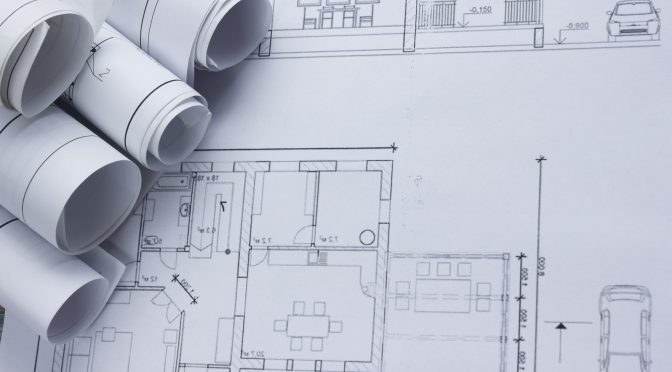If you have recently purchased or converted a property to rent, we’re sure you’re eager to get tenants through the front door. But before you do so, there are several obligations you first need to fill.
Many of these duties will relate to private landlord legislation, such as fitting smoke alarms on every floor and completing ‘Right to Rent’ checks. You will also need to make sure your property is sufficiently maintained and safe for housing tenants. As we will discuss later, not fulfilling these obligations could land you in hot water with the law.
But don’t worry. To help you set your house in order, we’ve compiled a landlord’s checklist. You can use this as a quick reference guide for the information you need to know before letting out your property.
Contents:
- House licencing
- Energy performance certificate
- Gas safety certificate
- Electrical installation condition report
- Fire safety
- Cleaning and repairs
- Right to Rent check
- Tenancy referencing
- Personal data privacy notice
- Tenancy deposit protection certificate
- How to rent guide
- Compiling an inventory
- Landlord insurance
Housing licencing
Let’s first start with your legal requirements as a landlord and, specifically, housing licencing.
Depending on the location of your property, you may be required to obtain a licence from your local authority.
There are three types of private rented property licences:
Mandatory house in multiple occupation (HMO) licence
Mandatory licencing is enforced on a national level by the UK Government.
Since 1 October 2018, HMOs with five or more occupiers living in two or more households, regardless of the number of storeys, are required to be licenced. The Housing Act 2004 refers to ‘households” as including members of the same family living together.
If you wish to operate a house as an HMO, it must have the correct class of planning use. You can speak to your local authority about planning permissions and changing a dwelling house to an HMO.
Local authorities can also ask you to obtain additional licencing, such as one or more of the following.
Additional licence
HMOs occupied by three or four people in at least two households.
Selective licence
Any property which houses rental tenants, and which is not an HMO, but is in one of the designated selective licencing streets.
As licencing requirements can differ depending on the location of your property in the UK, it’s always best to first speak to your local authority.
Energy performance certificate (EPC)
One of the first things you should do before looking for tenants is to arrange an Energy Performance Certificate (EPC). The UK Government describes this as “providing details on the energy performance of the property and what you can do to improve it.”
All landlords are required by law to provide tenants with an Energy Performance Certificate. The good news is that, once you’ve completed an EPC assessment, it’s valid for ten years.
Some changes in the law you should be aware of:
- In 2018, updated legislation showed that both domestic and non-domestic properties in England and Wales have to meet a minimum energy efficiency standard (MEES). The minimum required is a rating of ‘E.’
- From April 2020, the new MEES rules apply to all existing lets. So, as discussed above, you will need an EPC rating of an ‘E or above’ to let your property.
Not meeting the MEES rules could result in facing fines of up to £5,000, so it’s best to make this a priority before letting your property. What’s more, failing to provide your tenant with an EPC certificate before they move in can affect your ability to serve a Section 21 notice, as it won’t be considered valid.
Gas certificate
As with the EPC assessment, you will also need to have a Gas Safety check performed on your property. Unlike the EPC, however, this will need to be done every year. This is a requirement of the Gas Safety (Installation and Use) Regulations 1998.
You will need to ask a Gas Safety registered engineer to check your appliances, pipework, and flues. After the engineer has carried out checks, they will provide you with a Gas Safety Record (previously known as a certificate or a CP12). The record will include things like a description of each appliance tested, any safety issues identified, and whether any further action is needed.
You should also receive a building regulations compliance certificate if a registered engineer installs a gas appliance in your property. This certificate makes your local authority aware of any new appliance.
Electrical Installation Condition Report (EICR)
In 2019, the Ministry of Housing, Communities and Local Government (MHCLG) announced that mandatory five-year electrical installation checks on private rented housing in England would be introduced.
Although this is a phased approach, the onus is on landlords to abide by The Landlords and Tenants Act (1985) – requiring you to make sure that the electrical installation in your rented property is safe. The UK Government states that landlords must make sure the electrical system and appliances are safe; for example, sockets, light fittings, cookers, and kettles.
By having an EICR inspection, you can be sure that you’re complying with the act and fulfilling your duty of care to tenants. Please also make sure that any inspectors hired to issue an EICR hold the correct qualification.
Fire safety
The law requires landlords to provide a smoke alarm on each storey and a carbon monoxide alarm in any room with a solid fuel-burning appliance (for example, a coal fire or wood-burning stove).
You must also check that tenants have access to escape routes at all times, and that furniture and furnishings supplied are fire safe.
While you won’t get a certificate for meeting fire safety regulations, you could receive a £5,000 civil penalty if you don’t meet the requirements.
If your property is an HMO, you will need to complete a full risk assessment. There may be additional requirements, too, such as providing fire alarms and extinguishers if it’s a large HMO. The UK Government has a page on HMO requirements, here.
Speak to your local authority if you’re not sure what’s required.
Cleaning and repairs
With fire safety checks, EPC assessments, and gas checks front of mind, it’s easy to overlook the essential cleanliness of your property. But remember, you are legally obliged to ensure your property is safe and free from any hazards.
Whether it’s damp and mould, pests (such as ants, cockroaches or vermin), or unsafe appliances, it’s crucial that you get everything in order before a tenant moves in. In doing so, you will stay on the right side of the law and give yourself a better chance of attracting tenants to view your property.
Your obligations to health and safety shouldn’t stop once your tenants move in, either. Tenants will only need to maintain your home to a reasonable level and are not required to leave it in a better condition than when they moved in.
Know your tenants
If you’ve worked through all of the above requirements, you’re well on your way to beginning life as a landlord. But before you can just let anyone into your property, you will first need to comply with several other tenancy obligations.
Let’s take a look at some of the key points:
Right to rent check
As of February 2016, the law requires all landlords in England to conduct ‘right to rent’ checks. This update in the law asks landlords to check that all tenants who occupy their property have the legal right to rent in the UK.
You will need to check and take copies of your prospective tenants’ identity documents. The UK Government’s guidelines set out a list of acceptable single and combination documents that show an unlimited right to rent (you can read which documents are considered legitimate, here).
You can carry out these checks yourself or ask a letting agent to do the work on your behalf. But bear in mind that, if you don’t make these checks, you could receive a fine of up to £3,000 per tenant. It is also illegal only to check tenants you suspect are not British.
Before the start of a new tenancy, you must check all tenants aged 18 and over, even if:
- They’re not named on the tenancy agreement.
- There’s no tenancy agreement.
- The tenancy agreement is not in writing.
These rules do not currently apply if you are renting in Wales, Scotland or Northern Ireland. You can read more about the Right to Rent scheme, here.
Tenancy referencing
Along with the Right to Rent scheme, landlords should run a series of tenancy referencing checks. You can do these yourself, or you can ask a letting agent to do them on your behalf.
While tenancy referencing is not a legal requirement, it is a prevalent practice and one that could save you running into problems further down the line.
Here are a few things you should ask for:
- Proof of identity – such as a passport.
- National insurance number.
- Proof of address.
- Bank statements.
- Employer’s reference.
- Previous landlord reference.
- Credit reference checks.
After completing these checks, you should decide whether you want the prospective tenant in your property. If it doesn’t feel right or you have any significant concerns (such as non-responsiveness), you are within your rights to say no. It’s your property, after all.
A personal data privacy notice
The General Data Protection Regulation came into force on 25 May 2019. It requires landlords to give tenants and any other residents or guarantors information about how their data will be used. You must provide this information at the point that data is collected.
To make sure you are GDPR-compliant, you should give your new tenants and any other residents or guarantors a privacy notice. This document sets out things like the landlord’s contact details and the purposes for using the personal data.
You can read more about GDPR, here.
Once you have found your new tenants
Tenancy deposit protection certificate
If you rent your home on an assured shorthold tenancy that started after 6 April 2007, you are legally required to put your tenant’s deposit in a government-backed tenancy deposit scheme (TDP). This is also true if someone else pays the deposit, such as a tenant’s parents.
You must provide the tenant with a tenancy deposit protection certificate within 30 days of receiving it and share information about the TDP scheme.
For more information about TDPs, go to the UK Government website.
‘How to rent guide’
While it may seem inane in the grand scheme of setting up a private residential property, you are legally required to provide your tenants with the ‘how to rent guide.’
This guide is for people who are about to rent a house or flat on an assured shorthold tenancy, and explains what to do at different points of the renting process. You can read more about the guide and download a copy from the Gov.uk website, here.
Beware that you will not be able to issue a Section 21 notice eviction unless you provide an up-to-date version of this guide to the tenant. And you are required to provide it to them within 21 days of starting the tenancy.
Compile an inventory
To protect your property against damage caused during a tenancy, you must create an inventory. This document is also known as the ‘schedule of condition.’
Your inventory report will give a detailed description of the condition of each room, any fixtures, and content. Ideally, this will also include photographs. You can give your new tenants the report when they first check-in to the property and talk them through each room/appliance.
While it’s easy to create an inventory report yourself, there are lots of free templates available online. A quick Google search will show you links to documents that are free to download.
Remember to take photographs at the end of the tenancy, too. In doing so, you can put them side-by-side with the originals and highlight any damage.
Arrange landlord insurance
Last but by no means least is landlord insurance. Having the right cover in place will protect you and your investment should any unforeseen damages arise.
Here at Bollington, we can tailor a landlord insurance policy to your property and the types of tenancy you have. A standard contents and buildings insurance policy will include basics like £5million’s worth of property owners’ liability cover. But we also protect against accidental or malicious damage, subsidence, and loss of rent. And when it comes to tenants, we cover DSS, students, professionals and more.
Head over to our landlord insurance page to read about the cover we offer. Alternatively, get in touch with our team today to find out what level of protection your property needs.








